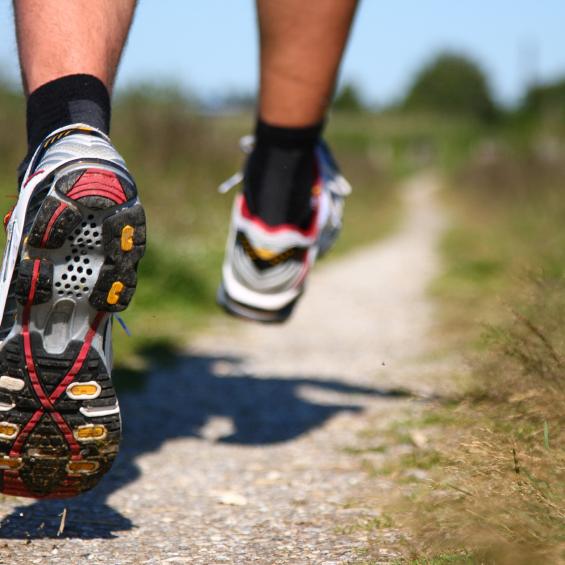
The debate about which running form is best – toe strike or heel strike – seems to be never-ending. One report shows the natural benefits of barefoot running and forefoot strike while another reveals that even some of the world’s elite runners strike the ground heel first. So, which is the best way? A new study, which serves as the focus of a recent New York Times article, suggests that maybe there is no “best” way…
Chris Brinton, clinic director at Elkton East, shares what runners should know about both heel and toe striking.
“Feet are like snowflakes,” Chris says. “Everyone’s feet are different and have different biomechanics. These differences help determine what really is the ‘best’ running form for an individual.”
Heel strikers and toe strikers
Toe strikers, meaning individuals who land on their forefoot when they run, do not pronate (turn foot inward) as much as heel strikers. However, they put more pressure on their Achilles and calf muscles, which can cause strain and injuries.
In comparison, heel strikers, meaning individuals who land on their heel when they run, tend to pronate more. These runners, who put pressure on their knees when turning the foot inwards, are more likely to experience IT band strain, knee pain, and shin splints.
“Runners need to absorb the shock of hitting the ground one way or another,” Chris says. “If they hit their forefoot first, they are at risk for one set of injuries. If they hit their heel first, they are at risk for another set of injuries. There is no magic thing to take away all the risk or pain.”
To minimize injuries, he suggests runners practice calf stretching 3-4x/day and also work on strengthening calf muscles with calf raises on daily basis as well.
Barefoot running
As for the barefoot running trend, Chris notes that the idea behind the trend is to promote forefront strike, which is the most natural type of movement.
“Before running shoes were really invented, individuals ran on their forefoot, not on their heels,” says Chris. “Over time, we’ve actually over-engineered our shoes and, by default, made the tissues in our feet weaker. When we have on a good pair of running shoes, we actually don’t have to work as hard as if we were running in bare feet or a zero-drop shoe.”
Chris states that you should ease into a minimalist shoe so you can slowly build up strength and strengthen the tissues in your feet.
“In some cultures, people run for miles without any real shoes on,” Chris says, citing the popular book Born to Run. “However, minimalist shoes can put a lot of strain on muscles you don’t typically use, so it’s best to ease into barefoot running slowly.”
Injury prevention and strength training for runners
No matter what your preferred shoe or foot strike is, each runner can focus on strengthening to help reduce the risk of injury.
“There’s really no ‘best’ way to run,” Chris says. “Something may eventually break down. But, it’s key to focus on building strength, no matter what level you’re at.”
